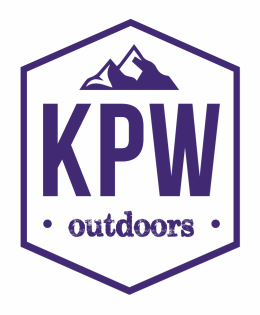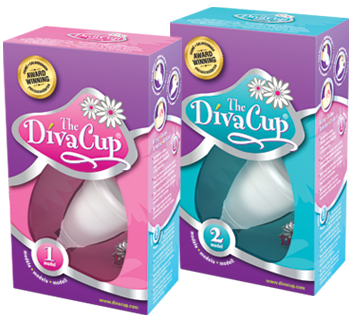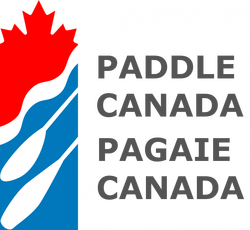Women who frequent backcountry terrain have some extra added challenges when it comes to letting nature call. Leaving the flush toilet, sink and and shower behind for days, weeks, or months can be a struggle in terms of maintaining personal hygiene. The design of our female anatomy creates issues for common procedures such as urinating, menstruating, and showering in the backcountry. I believe that this is one of the main reasons that women are hesitant to explore the backcountry, especially for lengthy visits. Here are some tips that I've accumulated over the years:
1) Urinating:
Going pee in the woods has it's difficulties as a woman. Having to bare your bottom and squat in a buggy forest, glacier, or in winter can be difficult and/or awkward. In a forest, it's best to find a private level spot in the woods 200ft/60m away from a watersource and dig a cathole 6-8" or 15-20cm deep either by using a small camp spade or using the heel of your boot. Once you've finished your business, recover the cathole including your toilet paper and make sure to use hand sanitizer afterwards. I keep a small bottle of sanitizer with my toilet paper in a plastic bag. Digging a cathole enables your waste to decompose without runoff into adjacent waterways. In bug season, I am normally wearing a bug jacket and try to pull down the bottom of the jacket over my lower back and bottom so I can minimize the number of bites!
On a glacier, there are no trees to hide behind. Etiquette states to verbally inform your ropemates to look the opposite way if one person needs to let nature call. As a female, taking off your harness while attached to your lifesaving rope in crevasse terrain is downright unsafe. Instead, unclip the elastic straps at the back of your harness, then pull down your pants while keeping your harness on the entire time. In winter conditions as well on glaciers, I have begun using a feminine urinating aid. There are many different brands on the market and make sure you do your research and read the reviews. I have been using Freshette with much success! You do need to practice at home before using it for real. Using a urinating aid means you don't have to squat down to pee. You can stand up just like the guys! I found them most useful in glacier terrain when I don't want to expose my backside in front of other people, as well as winter camping when it's too cold. I have also used it in the tent in the middle of the night, into a designated pee bottle. I don't tend to bring my Freshette with me in forested areas or areas with designated outhouses or kybos. With any of these devices practice makes perfect so make sure you try it at home first!
1) Urinating:
Going pee in the woods has it's difficulties as a woman. Having to bare your bottom and squat in a buggy forest, glacier, or in winter can be difficult and/or awkward. In a forest, it's best to find a private level spot in the woods 200ft/60m away from a watersource and dig a cathole 6-8" or 15-20cm deep either by using a small camp spade or using the heel of your boot. Once you've finished your business, recover the cathole including your toilet paper and make sure to use hand sanitizer afterwards. I keep a small bottle of sanitizer with my toilet paper in a plastic bag. Digging a cathole enables your waste to decompose without runoff into adjacent waterways. In bug season, I am normally wearing a bug jacket and try to pull down the bottom of the jacket over my lower back and bottom so I can minimize the number of bites!
On a glacier, there are no trees to hide behind. Etiquette states to verbally inform your ropemates to look the opposite way if one person needs to let nature call. As a female, taking off your harness while attached to your lifesaving rope in crevasse terrain is downright unsafe. Instead, unclip the elastic straps at the back of your harness, then pull down your pants while keeping your harness on the entire time. In winter conditions as well on glaciers, I have begun using a feminine urinating aid. There are many different brands on the market and make sure you do your research and read the reviews. I have been using Freshette with much success! You do need to practice at home before using it for real. Using a urinating aid means you don't have to squat down to pee. You can stand up just like the guys! I found them most useful in glacier terrain when I don't want to expose my backside in front of other people, as well as winter camping when it's too cold. I have also used it in the tent in the middle of the night, into a designated pee bottle. I don't tend to bring my Freshette with me in forested areas or areas with designated outhouses or kybos. With any of these devices practice makes perfect so make sure you try it at home first!
2) Menstruation
If you find yourself unlucky and having to endure your menstrual cycle on a backcountry trip, you have probably been told that what you pack in, you have to pack out. Although very true, packing in a box of tampons and/or pads in a plastic bag with many other plastic bags to pack out the used items can be messy and inconvenient. I remember some days in bug season trying to rush this messy process while being attacked by hoards of blackflies and mosquitos. Being a female is tough! For the last 15 years or so, I have been using a menstrual cup that I use at home and in the backcountry. My most recent menstrual cup is the Diva Cup, that comes in two sizes: Size 1 for people under the age of 30 or women who haven't had a baby, or Size 2, for women over 30, or women who have had a baby. These cups are becoming more mainstream and popular (available at drugstores, naturopathic and outdoor stores) as women are seeing the multiple benefits. Environmentally, they are re-usable (my first one I had for 10 years), so they don't fill landfill with applicators and wrappers. They are more healthy: Can be worn for up to 12 hours so you don't have to deal with mid-day changes, and will not expose you to toxic shock syndrome. Lastly, they are financially a great investment as they cost around $50 each but can be used for many years, making it cheaper than using regular tampons and pads. In the backcountry, the Diva Cup enables adventurers to pack one small, lightweight shot-glass sized piece of silicone instead of piles of other absorbant options that could potentially get wet, rendering them useless. When using them, I sanitize my hands before removing the cup and dump the contents into a cathole or outhouse, and can rinse with water and wipe with toilet paper and re-insert for another 12 hours. At home I would thoroughly wash the cup with mild soap and water before inserting but that can't always happen in the backcountry. Avoiding having your period is also an option if you're on birth control. Using the pill, patch or ring, you can skip your period by starting your next cycle a week early, thus missing your period that month. Also, the Depo-Provera injection can also mean you lose your period altogether which could be a popular option for women doing multi-month or year long expeditions.
If you find yourself unlucky and having to endure your menstrual cycle on a backcountry trip, you have probably been told that what you pack in, you have to pack out. Although very true, packing in a box of tampons and/or pads in a plastic bag with many other plastic bags to pack out the used items can be messy and inconvenient. I remember some days in bug season trying to rush this messy process while being attacked by hoards of blackflies and mosquitos. Being a female is tough! For the last 15 years or so, I have been using a menstrual cup that I use at home and in the backcountry. My most recent menstrual cup is the Diva Cup, that comes in two sizes: Size 1 for people under the age of 30 or women who haven't had a baby, or Size 2, for women over 30, or women who have had a baby. These cups are becoming more mainstream and popular (available at drugstores, naturopathic and outdoor stores) as women are seeing the multiple benefits. Environmentally, they are re-usable (my first one I had for 10 years), so they don't fill landfill with applicators and wrappers. They are more healthy: Can be worn for up to 12 hours so you don't have to deal with mid-day changes, and will not expose you to toxic shock syndrome. Lastly, they are financially a great investment as they cost around $50 each but can be used for many years, making it cheaper than using regular tampons and pads. In the backcountry, the Diva Cup enables adventurers to pack one small, lightweight shot-glass sized piece of silicone instead of piles of other absorbant options that could potentially get wet, rendering them useless. When using them, I sanitize my hands before removing the cup and dump the contents into a cathole or outhouse, and can rinse with water and wipe with toilet paper and re-insert for another 12 hours. At home I would thoroughly wash the cup with mild soap and water before inserting but that can't always happen in the backcountry. Avoiding having your period is also an option if you're on birth control. Using the pill, patch or ring, you can skip your period by starting your next cycle a week early, thus missing your period that month. Also, the Depo-Provera injection can also mean you lose your period altogether which could be a popular option for women doing multi-month or year long expeditions.
3) Showering
Becoming sweaty in the backcounty is practically unavoidable. Reducing body odours or an unclean feeling is possible using the following options without a shower around. Swimming is a great way to remove the sweat an make you feel like you've showered. I use this option on canoe trips and backpacking trips in the summer months in bodies of water that temperatures are conducive. Alternatively, I take a sponge bath in colder lakes and rivers, using a small cloth or pack towel to pat myself down with. Lastly, I have also brought baby wipes with me give myself a quick wipe down if I don't think I have access to the first two options (ie. hut to hut ski touring). Keeping yourself clean and changing out of sweaty clothes at camp or hut can ensure the less likelihood of getting a yeast infection, other bacterial or fungal skin rashes, UTI's, and oral-fecal contamination.
Packing It Out
The best way to Leave No Trace is to leave little or no evidence behind. Packing out used tampons, applicators, pads, and toilet paper are common practices used by many in all environments. In some desert and mountainous regions, decomposition of solid waste (feces) is an major issue. For example, some of the world's most popular mountains are having problems with the number of deposits made by humans over the years. Some areas are mandated the used of WAG bags, which is essentially a glorified garbage bag kit that makes it easier for people to pack out all solid waste. Many mountaineering companies are encouraging the use of WAG bags for their clients and guides even in areas where it's not yet mandated. Fecal matter that is not carefully managed can run off into waterways and contaminate the watersource with deadly bacteria and parasites. Doing our part to reduce human impact on our environment will benefit us all in terms of our own health and the overall health of the ecosystem we adventure in.
Becoming sweaty in the backcounty is practically unavoidable. Reducing body odours or an unclean feeling is possible using the following options without a shower around. Swimming is a great way to remove the sweat an make you feel like you've showered. I use this option on canoe trips and backpacking trips in the summer months in bodies of water that temperatures are conducive. Alternatively, I take a sponge bath in colder lakes and rivers, using a small cloth or pack towel to pat myself down with. Lastly, I have also brought baby wipes with me give myself a quick wipe down if I don't think I have access to the first two options (ie. hut to hut ski touring). Keeping yourself clean and changing out of sweaty clothes at camp or hut can ensure the less likelihood of getting a yeast infection, other bacterial or fungal skin rashes, UTI's, and oral-fecal contamination.
Packing It Out
The best way to Leave No Trace is to leave little or no evidence behind. Packing out used tampons, applicators, pads, and toilet paper are common practices used by many in all environments. In some desert and mountainous regions, decomposition of solid waste (feces) is an major issue. For example, some of the world's most popular mountains are having problems with the number of deposits made by humans over the years. Some areas are mandated the used of WAG bags, which is essentially a glorified garbage bag kit that makes it easier for people to pack out all solid waste. Many mountaineering companies are encouraging the use of WAG bags for their clients and guides even in areas where it's not yet mandated. Fecal matter that is not carefully managed can run off into waterways and contaminate the watersource with deadly bacteria and parasites. Doing our part to reduce human impact on our environment will benefit us all in terms of our own health and the overall health of the ecosystem we adventure in.



 RSS Feed
RSS Feed


